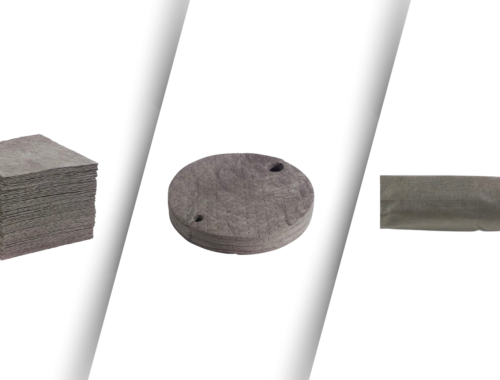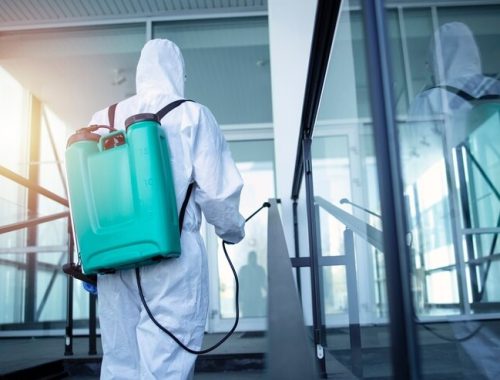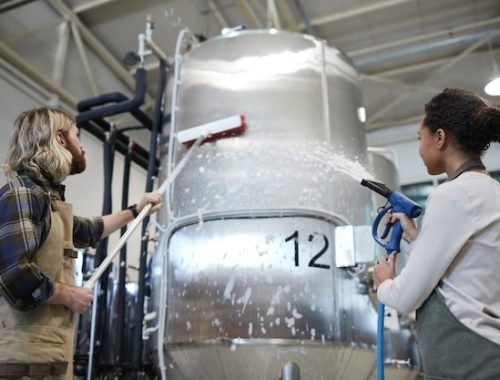Spills in workplaces can create serious hazards, damage equipment, and slow down productivity. Factories, warehouses, and laboratories handle liquids daily, making effective spill control essential.
The right solution depends on the type of spill, industry requirements, and cleanup speed. Universal Absorbent Socks and Universal Absorbent Pads are two common spill control options, but how do they compare to traditional methods?
This guide breaks down their differences, benefits, and best-use cases to help businesses choose the right spill containment solution.
1. What Are Universal Absorbent Socks?
Universal Absorbent Socks are long, flexible tubes filled with absorbent materials. They surround and contain spills, preventing liquids from spreading.
Key Features:
- Designed to absorb oils, coolants, water, and chemicals.
- Flexible shape conforms to spills, machinery, and tight spaces.
- Prevents liquid from reaching walkways and sensitive equipment.
- Available in different lengths for small and large spills.
2. What Are Universal Absorbent Pads?
Universal Absorbent Pads are flat, sheet-like absorbents that soak up liquids quickly. They are ideal for direct placement over spills.
Key Features:
- Suitable for a wide range of liquids, including oils, chemicals, and water.
- Lightweight and easy to store for quick access.
- Comes in perforated designs for customizable sizes.
- Effective for everyday spill cleanup and routine maintenance.
3. Comparing Universal Absorbent Socks and Universal Absorbent Pads
| Feature | Universal Absorbent Socks | Universal Absorbent Pads |
| Best for | Containing and stopping spill spread | Soaking up spills quickly |
| Shape | Flexible, tube-like | Flat, sheet-like |
| Usage | Around machinery, drains, and walkways | Directly on liquid spills |
| Absorption Capacity | Holds large amounts of liquid | Quick absorption of surface spills |
| Reusability | Some can be wrung out and reused | Usually single-use |
Both options serve different purposes. Universal Absorbent Socks prevent spills from spreading, while Universal Absorbent Pads quickly absorb liquid once contained.
4. Traditional Spill Solutions and Their Limitations
Before Universal Absorbent Socks and Universal Absorbent Pads, businesses used different methods for spill cleanup. Some traditional solutions still exist, but they have major drawbacks.
4.1 Mops and Rags
- Requires manual effort and multiple applications.
- Spreads contaminants instead of containing them.
- Not effective for hazardous chemicals or oils.
4.2 Sawdust and Sand
- Creates additional mess and requires sweeping.
- Can damage drains and clog plumbing.
- Not absorbent enough for large spills.
4.3 Paper Towels and Cloth Wipes
- Inefficient for industrial spills.
- Requires large quantities for cleanup.
- Increases waste and disposal costs.
These traditional methods are outdated, messy, and ineffective compared to modern Universal Absorbent Socks and Universal Absorbent Pads.
5. Advantages of Universal Absorbent Socks and Pads Over Traditional Methods
Switching to Universal Absorbent Socks and Universal Absorbent Pads improves workplace safety, efficiency, and cleanliness.
5.1 Faster Spill Containment
- Universal Absorbent Socks create a barrier around spills instantly.
- Universal Absorbent Pads soak up liquids faster than mops or rags.
5.2 Better Workplace Safety
- Reduces slip hazards by preventing liquid spread.
- Keeps work areas dry, improving employee safety.
5.3 Cost-Effective and Efficient
- Less waste compared to disposable rags or paper towels.
- Requires fewer materials for large spills.
5.4 Suitable for Various Liquids
- Absorbs oils, water, solvents, coolants, and more.
- Works for both hazardous and non-hazardous spills.
Businesses that switch to Universal Absorbent Socks and Universal Absorbent Pads experience faster cleanup, improved safety, and lower costs.
6. When to Use Universal Absorbent Socks vs. Universal Absorbent Pads
6.1 Use Universal Absorbent Socks When:
- Containing large spills before cleanup.
- Surrounding leaking machinery.
- Creating a barrier around drains.
6.2 Use Universal Absorbent Pads When:
- Cleaning up small surface spills.
- Absorbing liquid in hard-to-reach areas.
- Wiping down wet or greasy surfaces.
Combining both products provides the best spill control strategy. Universal Absorbent Socks stop spills from spreading, while Universal Absorbent Pads absorb the liquid efficiently.
8. Environmental Benefits of Using Universal Absorbent Socks and Pads
Sustainable spill management is becoming a priority for many industries. Universal Absorbent Socks and Universal Absorbent Pads offer eco-friendly advantages over traditional methods.
8.1 Reduced Waste
- Traditional cleanup methods like rags and paper towels create excessive waste.
- Universal Absorbent Socks and Universal Absorbent Pads absorb more liquid with less material, reducing disposal costs.
8.2 Reusable and Biodegradable Options
- Some Universal Absorbent Socks can be wrung out and reused, minimizing waste.
- Biodegradable and environmentally safe absorbents are available for eco-conscious businesses.
8.3 Compliance with Environmental Regulations
- Proper spill containment prevents hazardous substances from entering drains and waterways.
- Using effective absorbents helps businesses comply with EPA and OSHA regulations.
Choosing Universal Absorbent Socks and Universal Absorbent Pads supports cleaner workplaces while reducing environmental impact. Businesses that prioritize sustainability benefit from lower waste disposal costs and improved compliance with regulations.
Encompass Supply Solutions: Your Source for Spill Control Products
For high-quality Universal Absorbent Socks and Universal Absorbent Pads, Encompass Supply Solutions provides reliable products designed for industrial, commercial, and manufacturing environments.
Why Choose Encompass Supply Solutions?
- Wide range of spill control products for all liquid types.
- Durable and high-absorption materials that work in any setting.
- Fast and reliable supply solutions for businesses of all sizes.
With Encompass Supply Solutions, businesses can improve workplace safety and efficiency with the right spill containment products.
Final Thoughts
Spill control is essential for any industry handling liquids. Universal Absorbent Socks and Universal Absorbent Pads provide superior containment and absorption compared to traditional methods.
By choosing the right spill control products, businesses reduce hazards, maintain cleaner workspaces, and save on cleanup costs. Encompass Supply Solutions offers the best solutions to keep workplaces safe and compliant.










